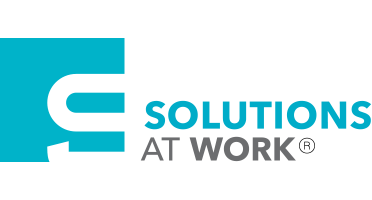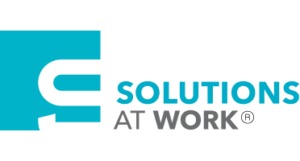How To ‘Spring Clean’ Your Employee Files
/in Employee Management /by mercadesHelpful ‘Spring Cleaning’ tips on what to do with your employee files. A complete guide to cleaning out your employee files.
Employee Retention Strategies to Retain Top Talent
/in Employee Management /by mercadesList of 9 strategic employee retention tactics that will help you re-engage and keep your top performers by Solutions at Work.
Addressing Opioids in the Workplace
/in Employee Management, Featured /by Nicole MurrayWe have published this helpful toolkit to help address this problem.
Click Here for the Full Benefits Toolkit – Addressing Opioids in the Workplace
There are over 42,000 opioid-related deaths in the United States each year, according to the Centers for Disease Control and Prevention (CDC)—a figure that has been rising steadily since the turn of the century. The opioid death rate is now more than five times greater than it was in 1999.
In addition to the skyrocketing opioid-related deaths, there are countless Americans who are still abusing prescription medications. This means employers must figure out how best to address this crisis with employees. That is where Solutions At Work can help.
The purpose of this toolkit is to help employers understand and deal with the opioid epidemic, create a healthier and more productive workforce, and reduce costs. This toolkit is not intended to replace the advice of a medical or legal professional. In many cases, you may need to contact a professional for assistance. However, this information can serve as a starting point for developing a meaningful opioid strategy.
Contact Us to help you put a policy in place for drug abuse in the workplace.
Onboarding New Employees In 9 Simple Steps
/in Employee Management /by Clark And AssociatesDid you know that half of all management-level hires fail within the first 18 months of employment?
The statistics are just as grim for hourly employees — half of them leave new jobs within the first 120 days! Every HR professional knows that turnover is costly and all too common. The good news is that implementing an onboarding process can help you retain the new employees that you worked so hard to recruit.
Onboarding a new employee is a crucial human resources process that is too often overlooked.
The objective of a successful onboarding process is to make a positive impression on the new employee, welcome them into the company culture, and position them for success in their new role. Onboarding shouldn’t be an afterthought; in fact onboarding requires just nine simple steps.
- Prepare for new employees before their first day. Make a positive first impression on new hires by ensuring that their first day goes off without a hitch. This will require some simple prep work. For example, provide the employee with a list of resources or documents that they should bring in on their first day. Tell the receptionist when the new hire will be arriving and who they should report to.
- Prepare their workplace. Prepare new hires for success by providing them with all of the technology and tools they will need before they arrive. Ensure that their workplace is equipped with everything they need to do their job efficiently.
- Create an agenda for the first week of work. Not knowing what to do can make new employees feel bored and undervalued. Make new hires feel involved by creating an agenda for their first week of work. Include a schedule of meetings with key staff members to discuss the roles of each individual and how they work together.
- Match new hires with a mentor. Companies with a mentoring program report a significant improvement in employee retention, organizational learning, leadership training, and career development. Start things off on the right foot by matching new employees up with a buddy or mentor who can help them navigate through their first 90 days on the job.
- Prepare all paperwork. New hires expect to do paperwork on their first day, so provide them with all of the documents they need to fill out in order to make their position official. You should also provide them with company email and phone lists, an agenda for their first week, the employee handbook, their job description, and any other necessary paperwork.
- Don’t forget to have fun! Sitting at a desk and filling out paperwork makes for an uninspiring first day, so take time to introduce the new employee to the rest of the office. Show them around the facility and point out key areas like restrooms, the break room, and their parking spot. It’s a nice touch to have some company swag at their desk, like a coffee mug or logo wear to make them feel like part of the team. Include some fun in their first week to make them feel excited about their new position and the company they work for. A group lunch or activity can make new hires feel welcomed and valued. If the new hire has a great first week it is more likely that they will look forward to returning to work day after day.
- Focus on education. Proper training and coaching are key components of a successful onboarding process, and contribute to the employee’s success in their new position. Training and education should be an integral part of the onboarding process. Continuously follow-up with the new hire to ensure that they are understanding and assimilating new information. Everyone has a different style of learning, and you don’t want to potentially lose a great employee just because his or her learning style differs from your current training structure. Create a variety of training materials, including written, verbal, and hands-on resources. It’s worth taking the time to accommodate the diverse learning needs of employees in order to improve their on-the-job success.
- Schedule regular performance reviews. The general rule of thumb is to conduct a review of the new employee’s performance at the end of their first 90 days. The review should include their immediate supervisor and other key members of the employee’s management team. The review should acknowledge things that are going well, as well as outline areas that need improvement. During the review meeting, you may realize that the employee needs more training in certain areas. For example, the new employee may need someone to teach them how to adhere to a particular process, so be ready to schedule some additional training time.
- Create an opportunity for the new employee to give feedback. Encourage the new employee to provide feedback on their overall onboarding and training experience. Use this feedback to improve the onboarding process for future hires. You should also give them an opportunity to comment on the company, culture, work environment, and overall business strategy. This is a great opportunity to gather information from a fresh perspective. Although some feedback may be difficult to hear, being open minded to new ideas is the first step towards positive change.
A successful onboarding process can lead to lower turnover, higher employee satisfaction, and a more productive corporate culture. Need help creating or refining your onboarding process? The HR consultants at Solutions At Work are here to help. Contact us to learn how we can help you create a streamlined onboarding process.

SOLUTIONS AT WORK
FOLLOW US

1575 Delucchi Lane, Ste 201
Reno, NV 89502
Call: 775.710.1946 Email: solutions@mysolutionsatwork.com
